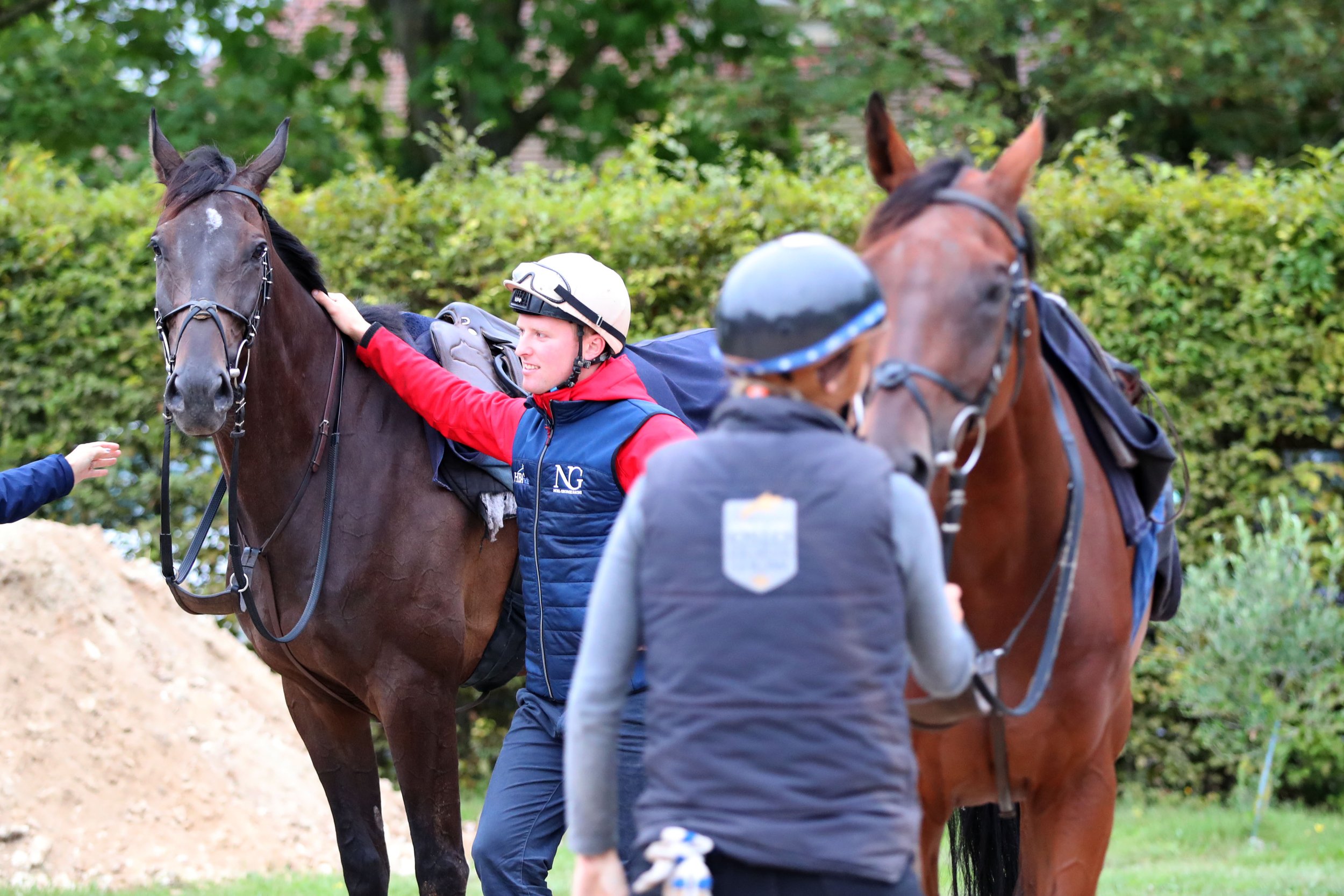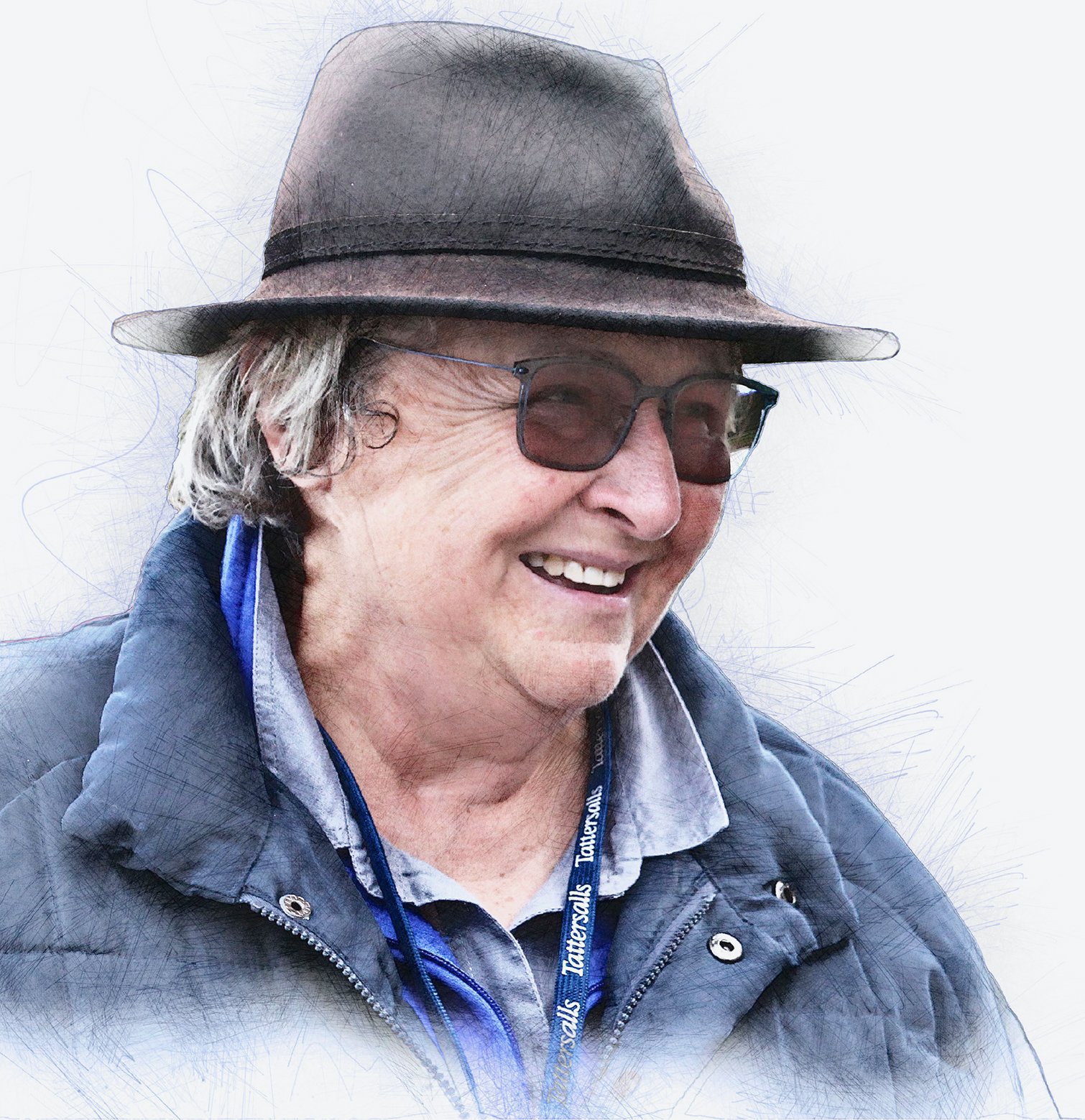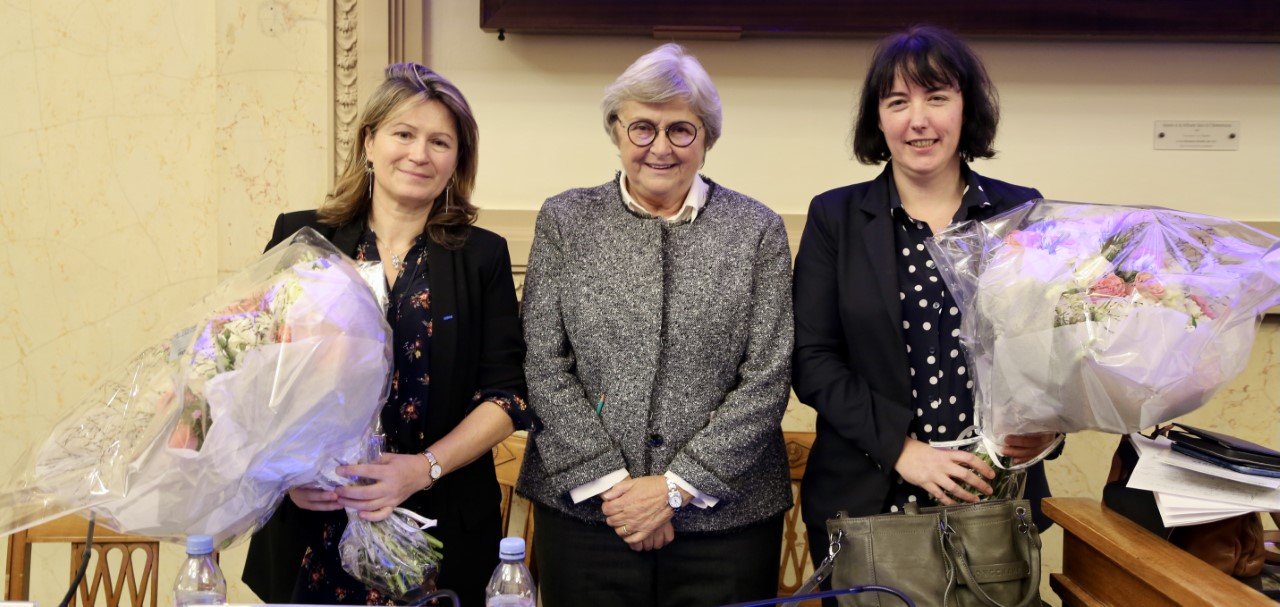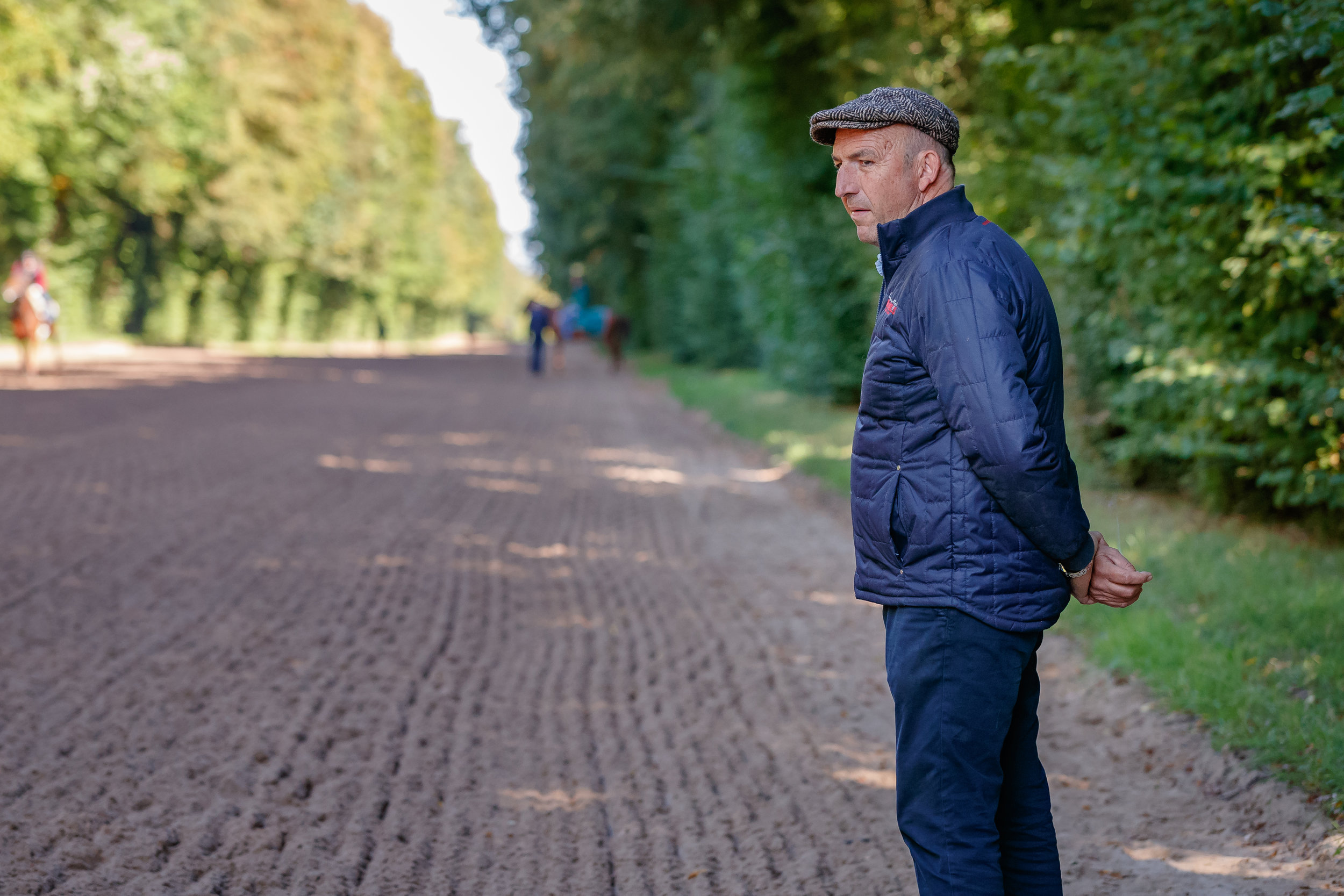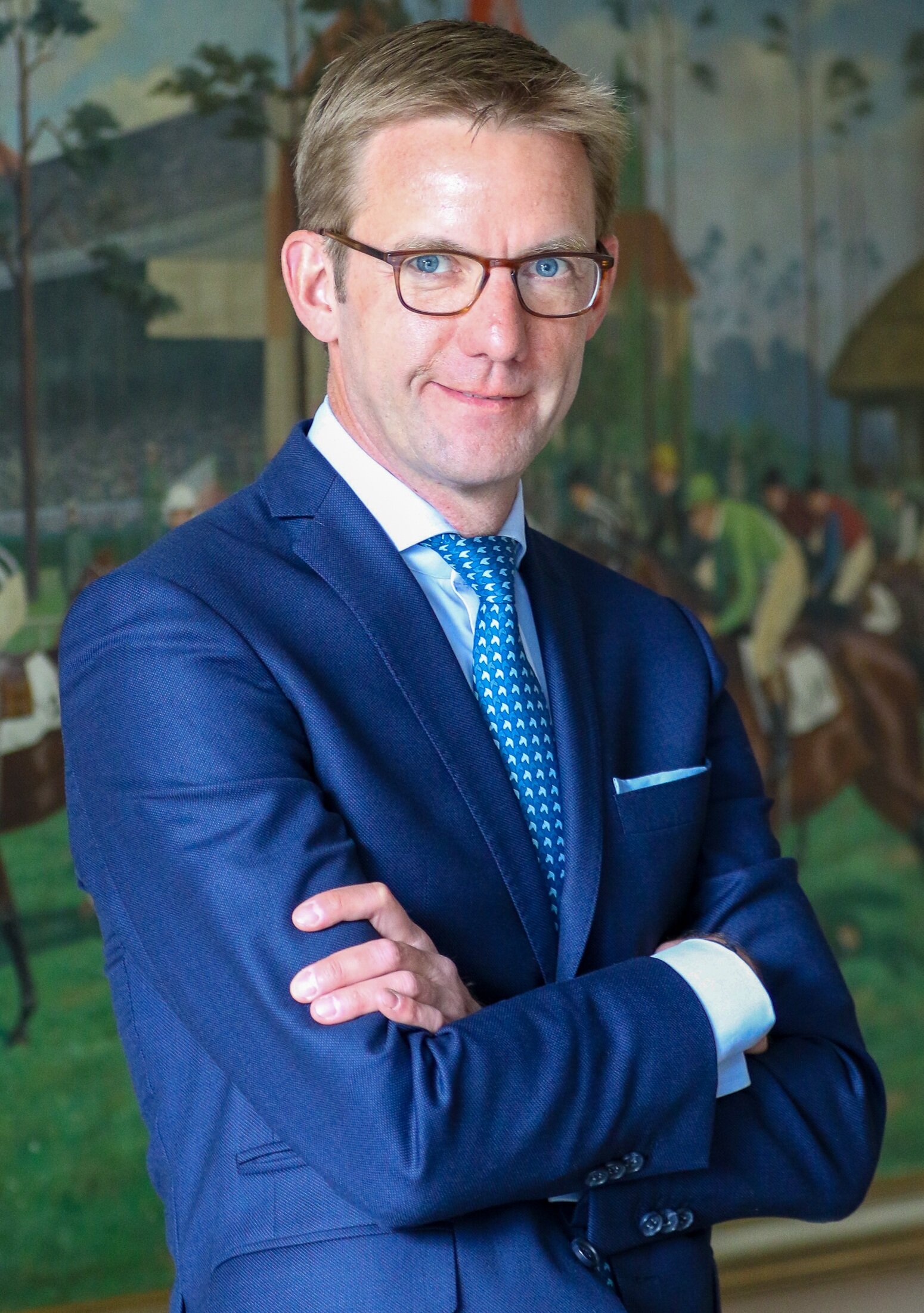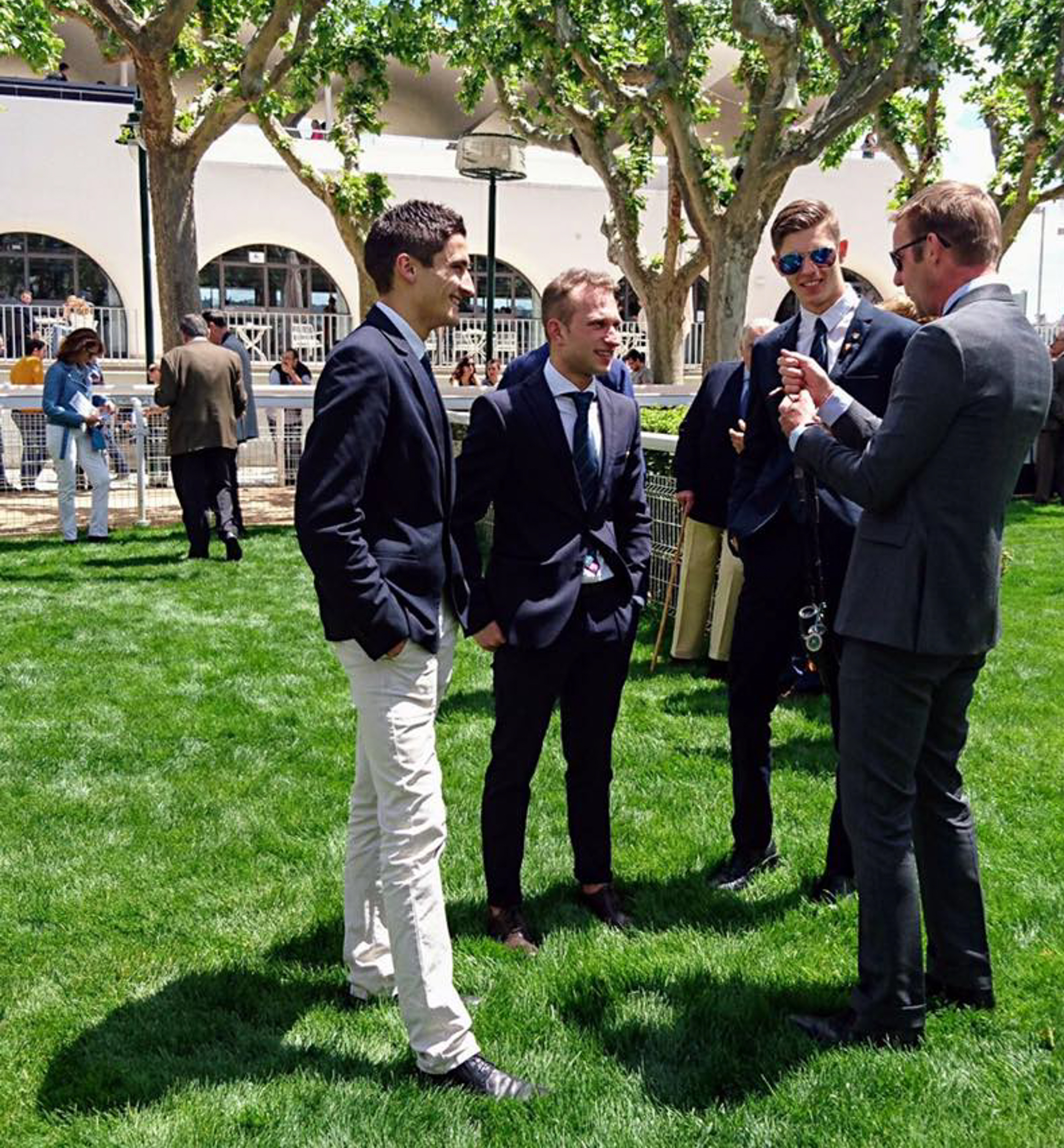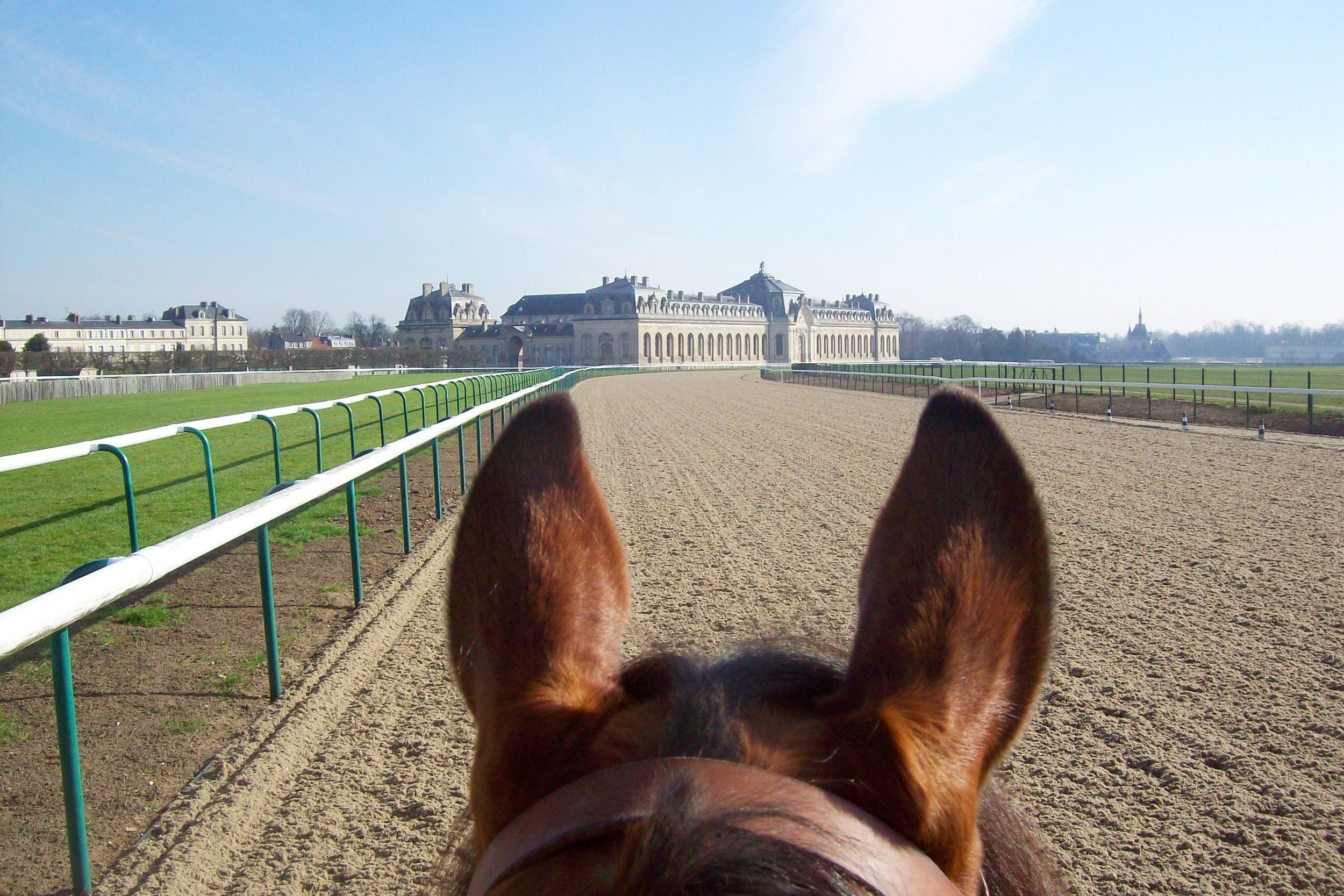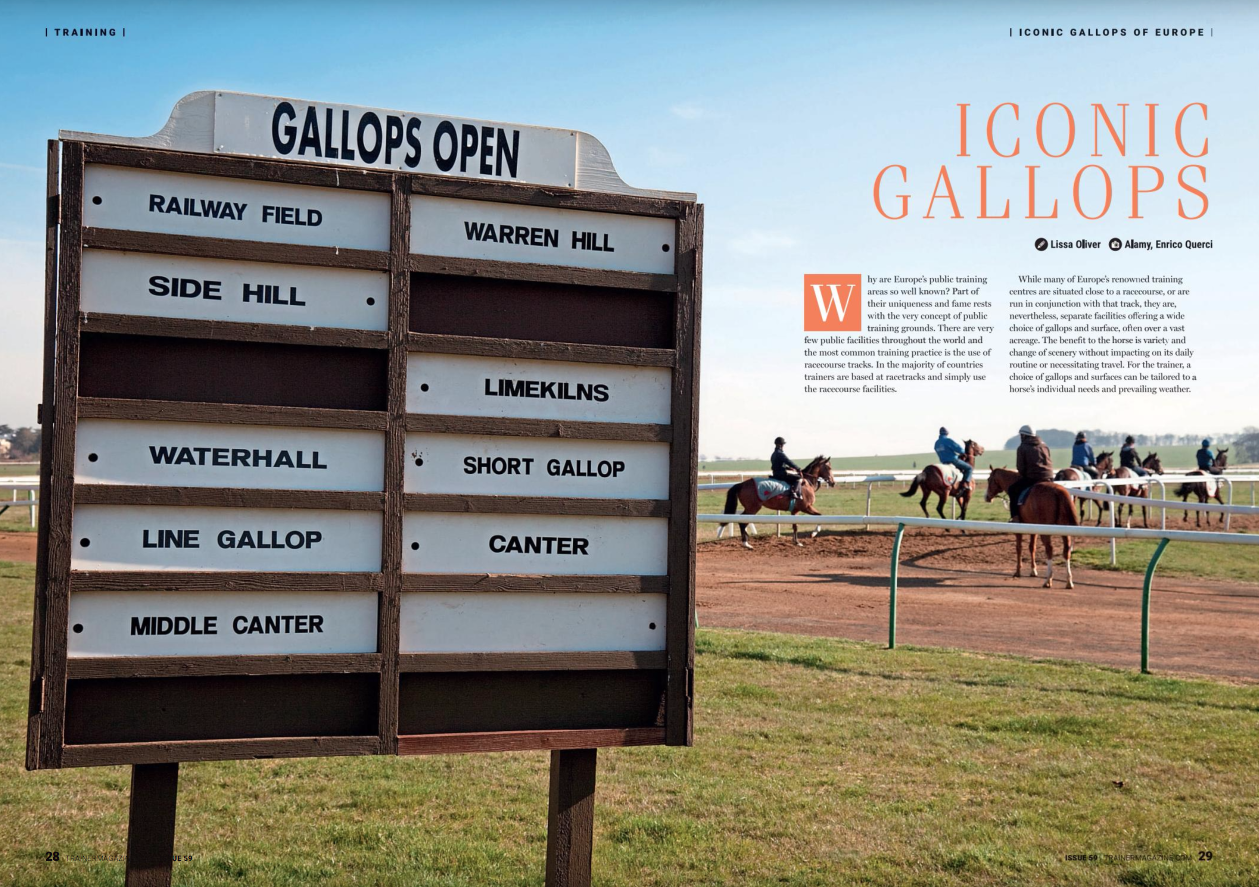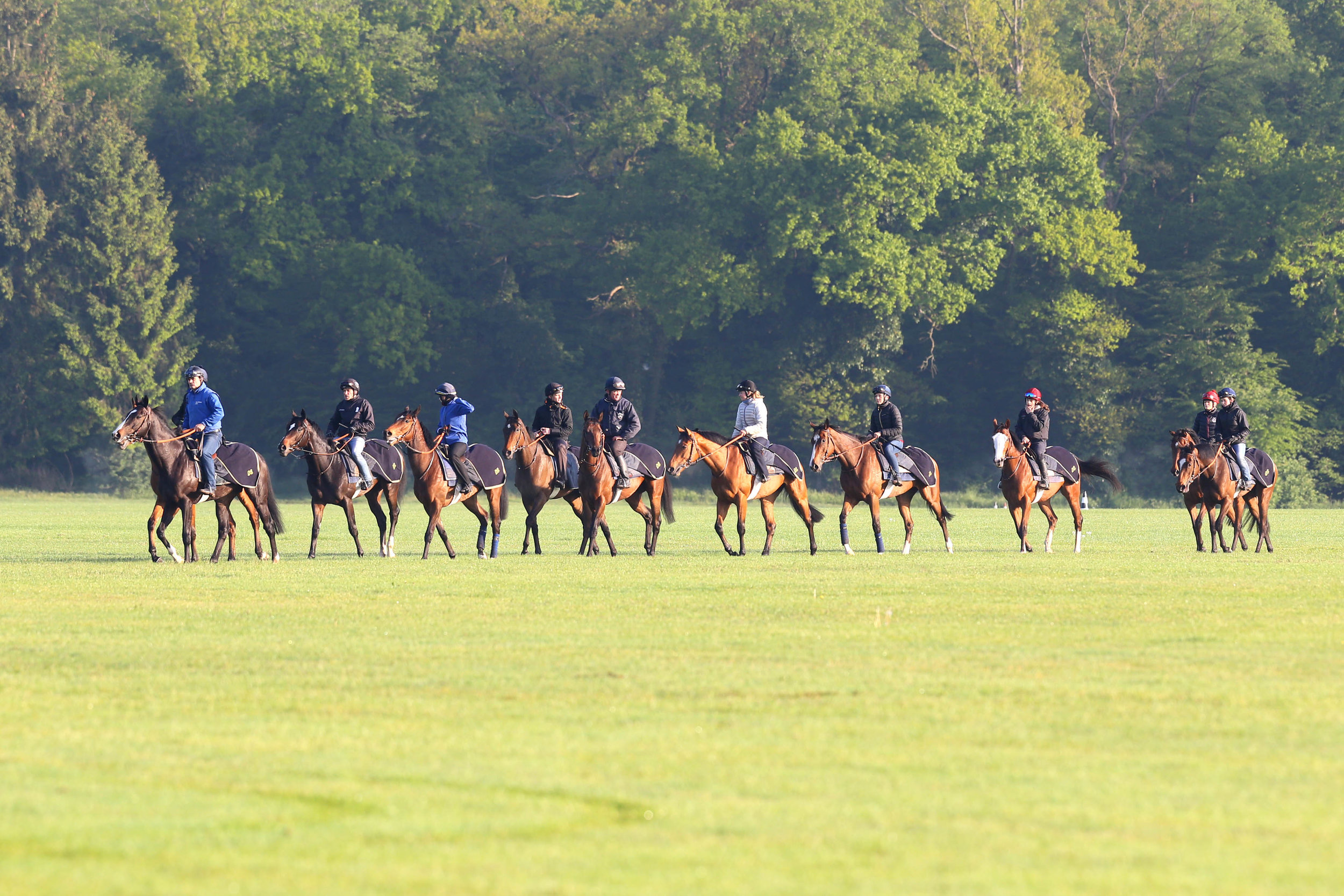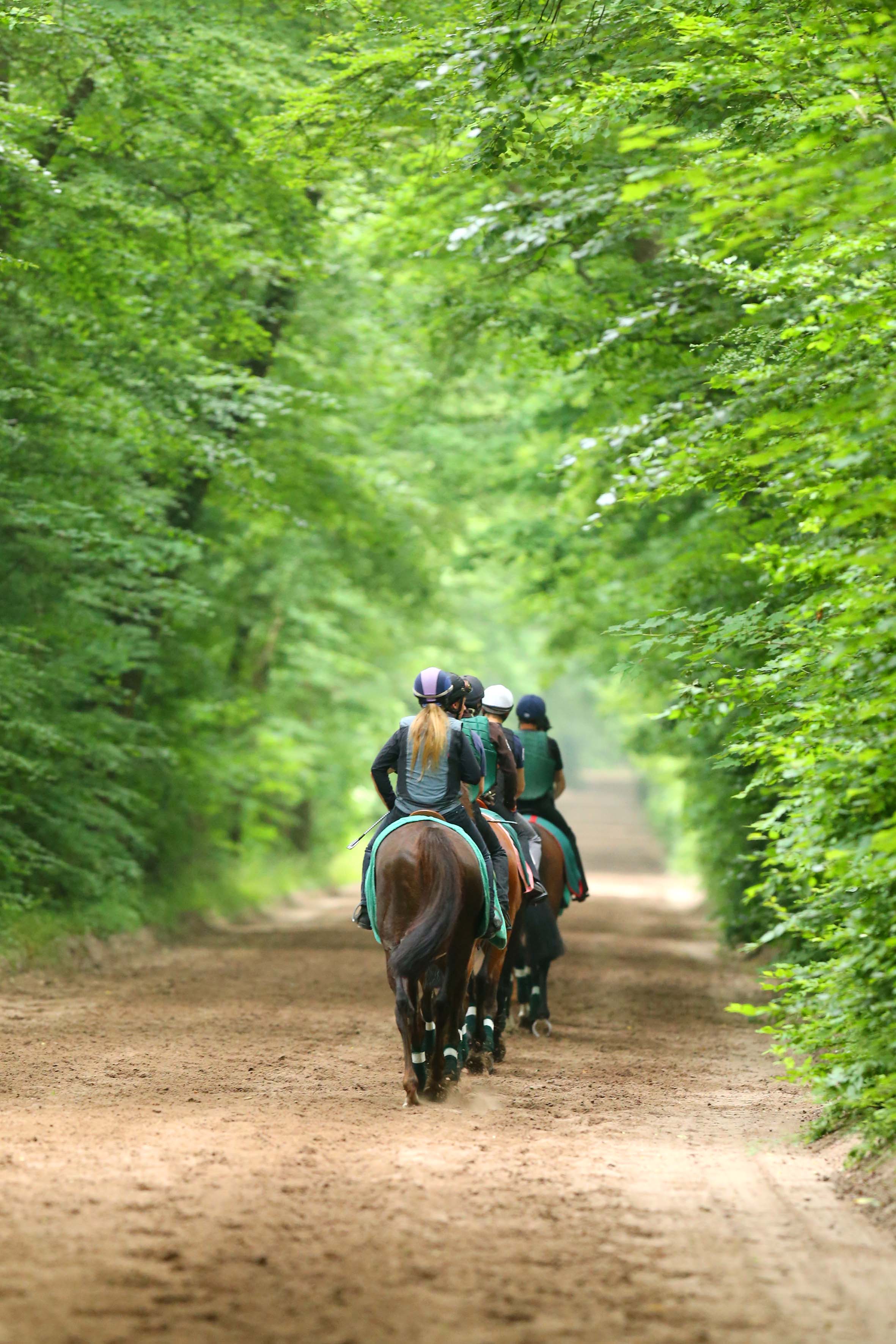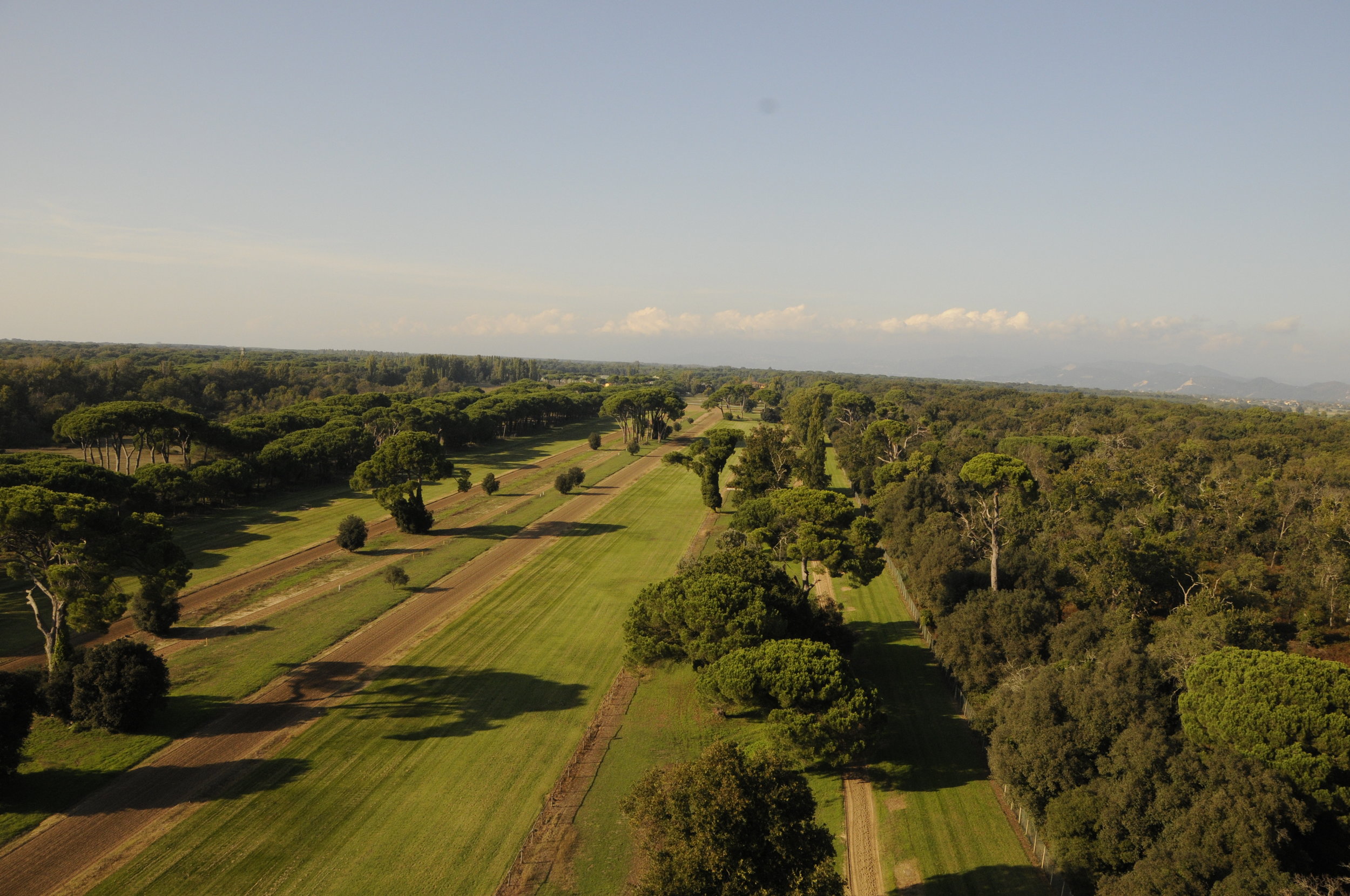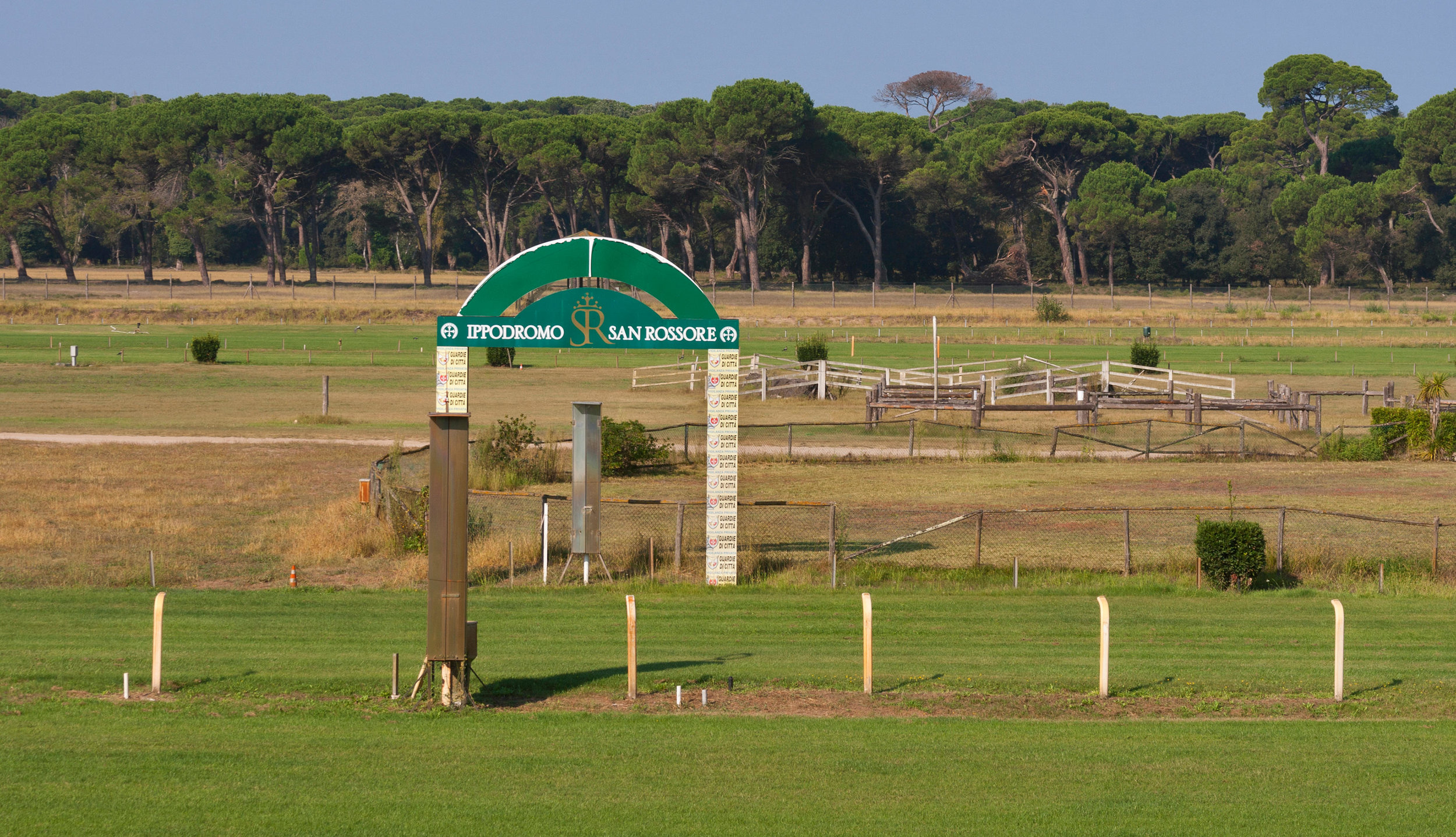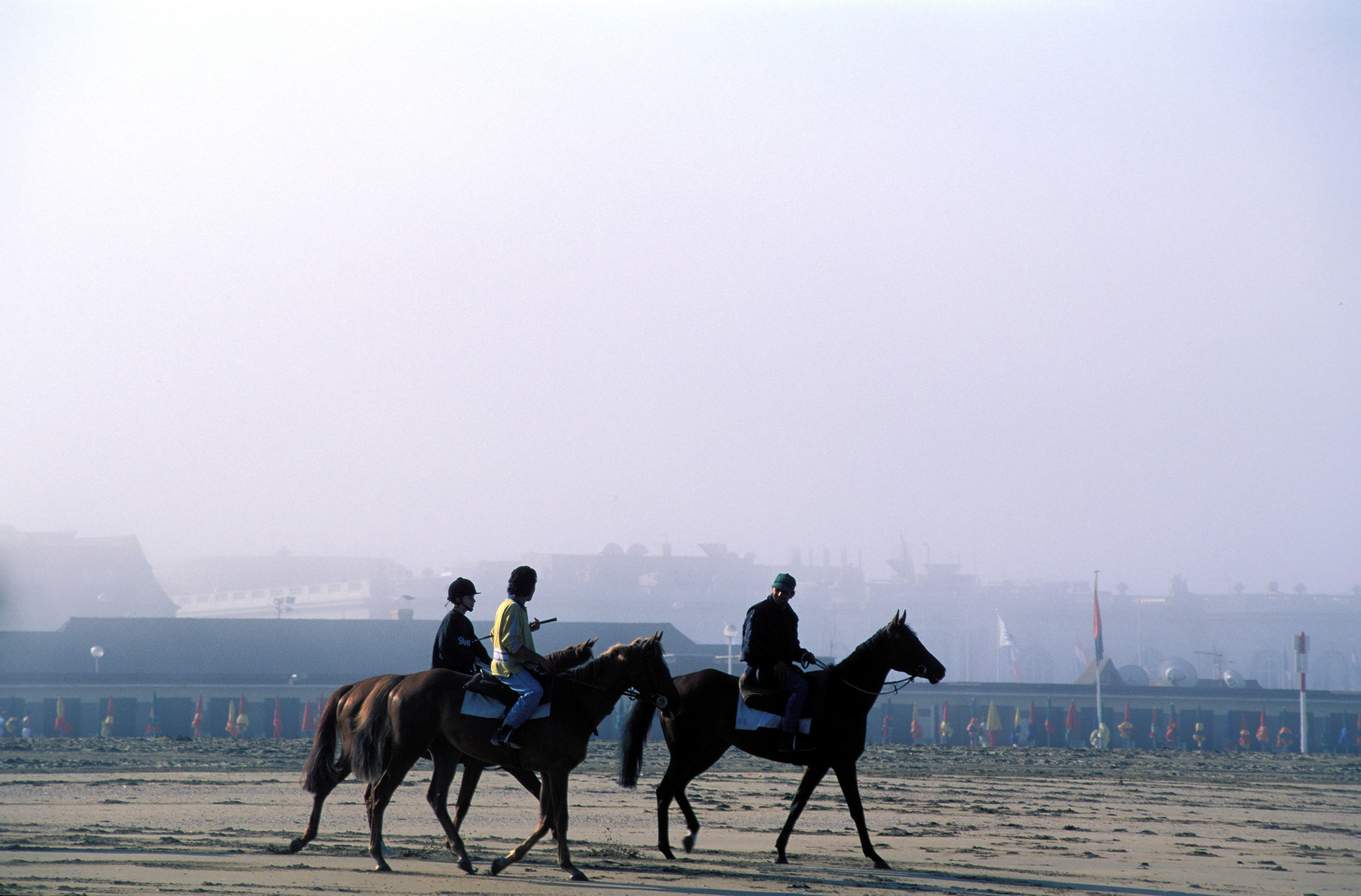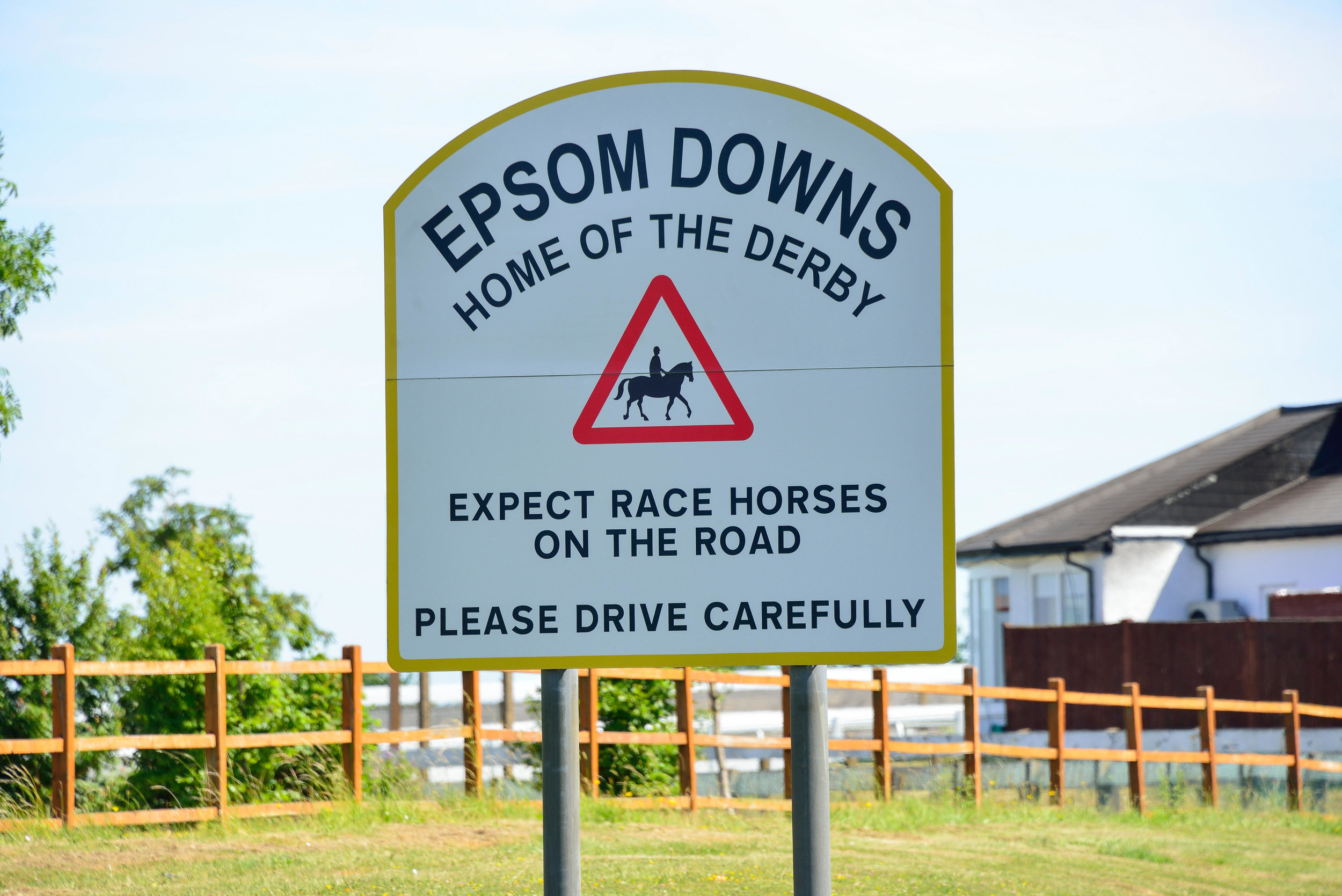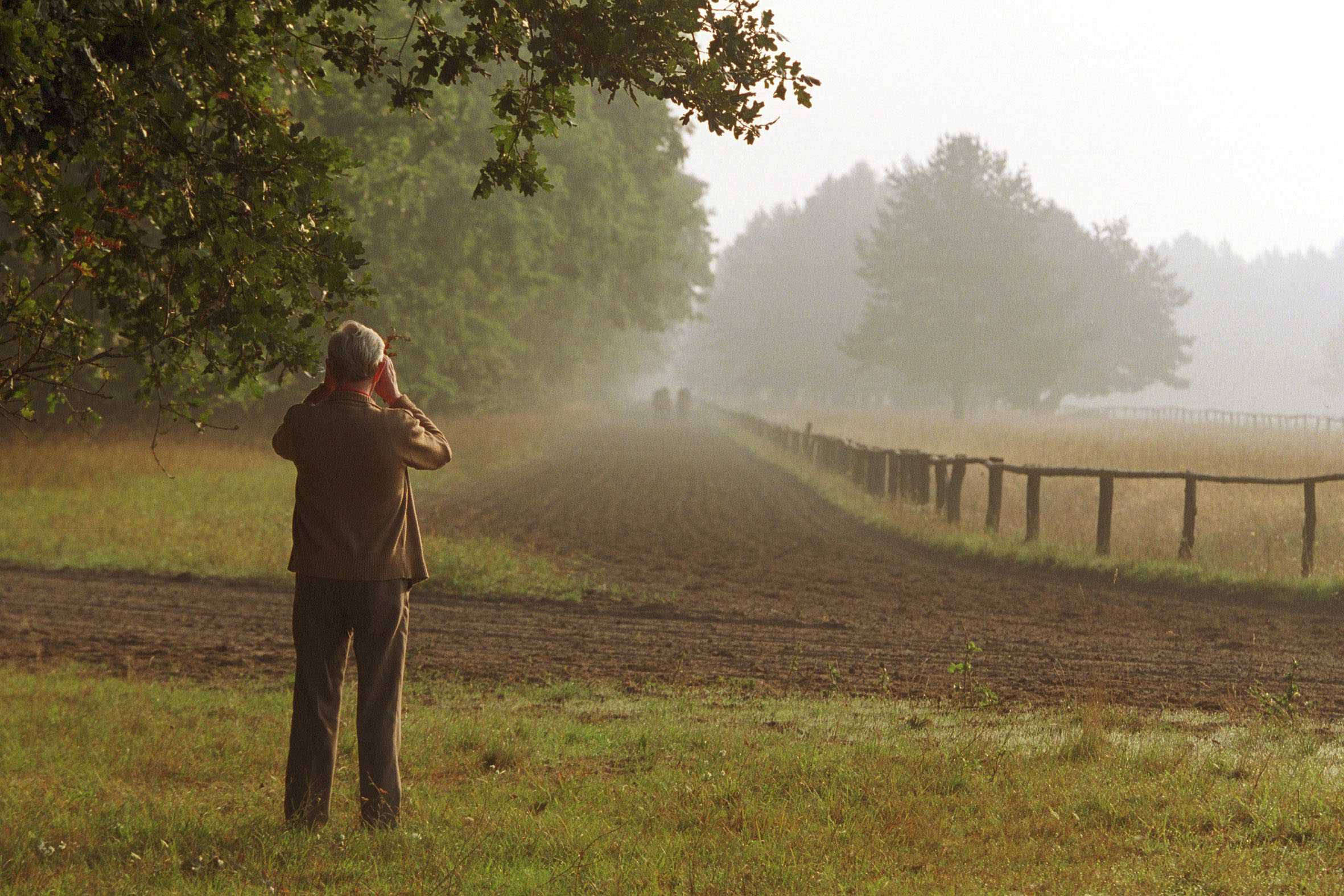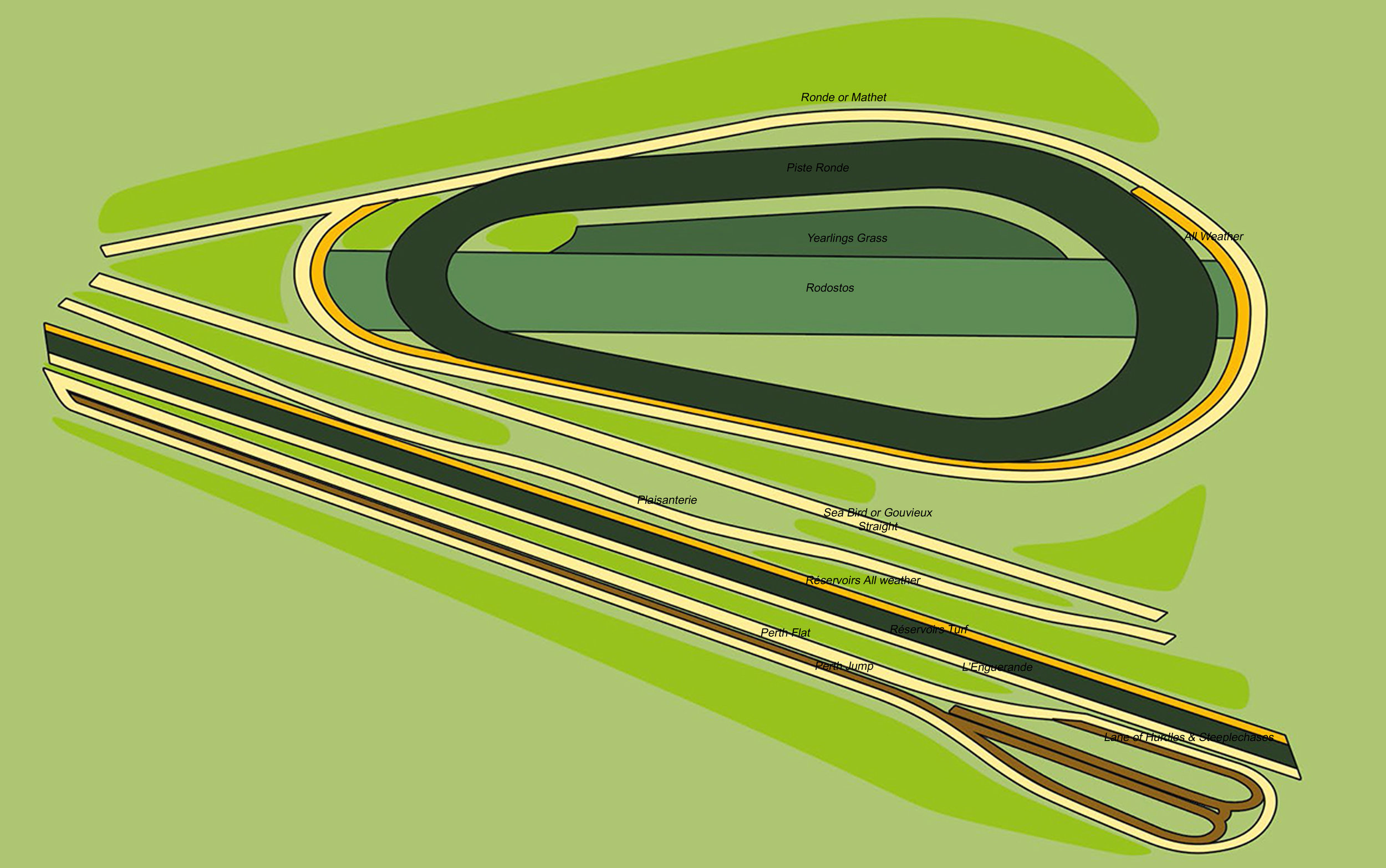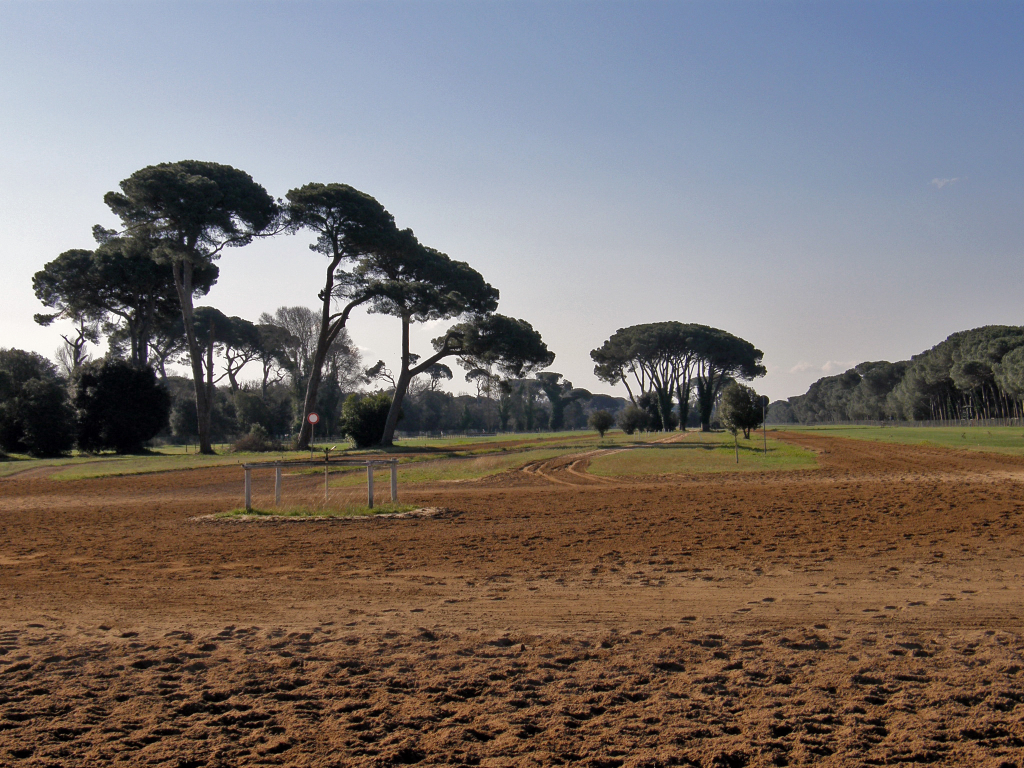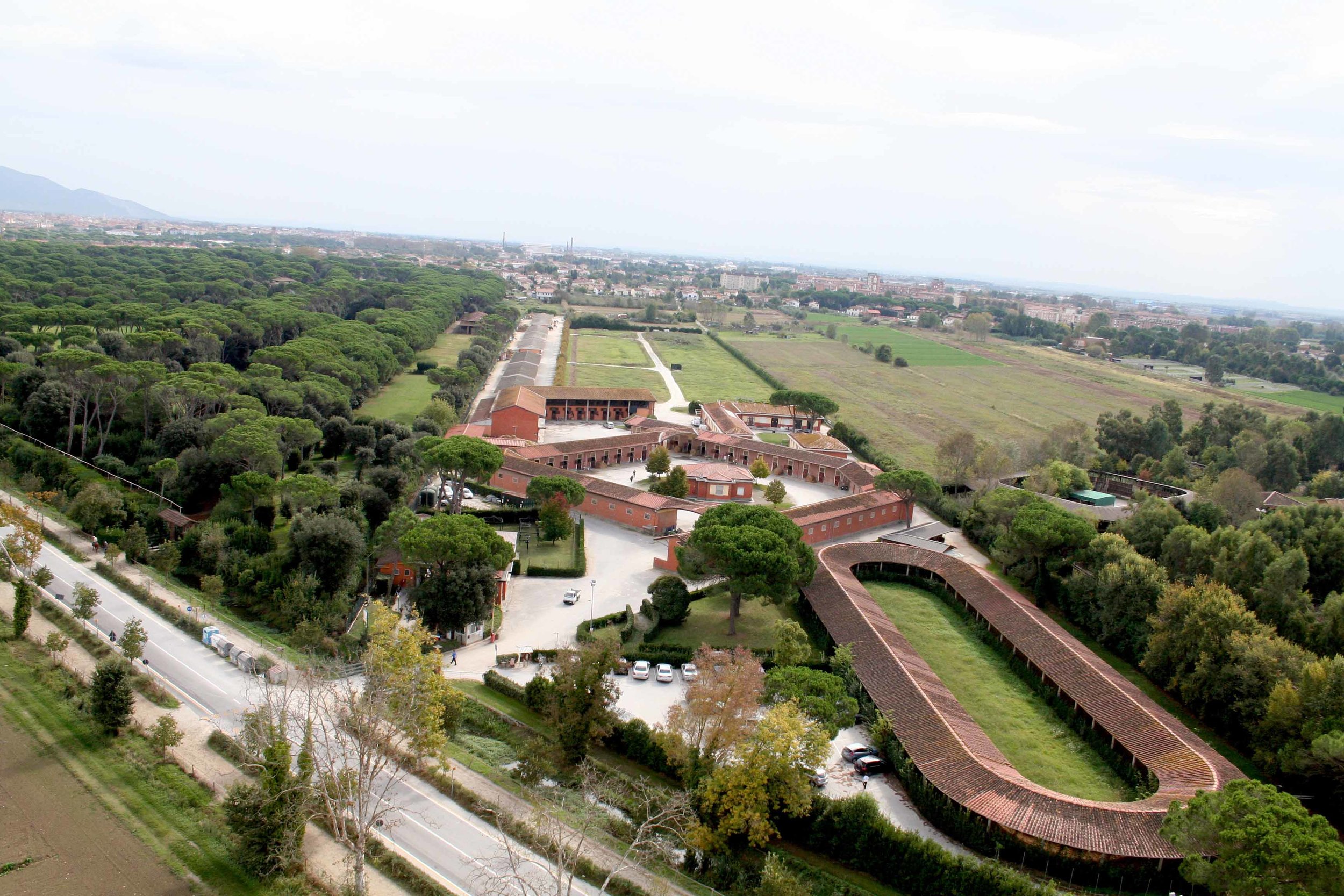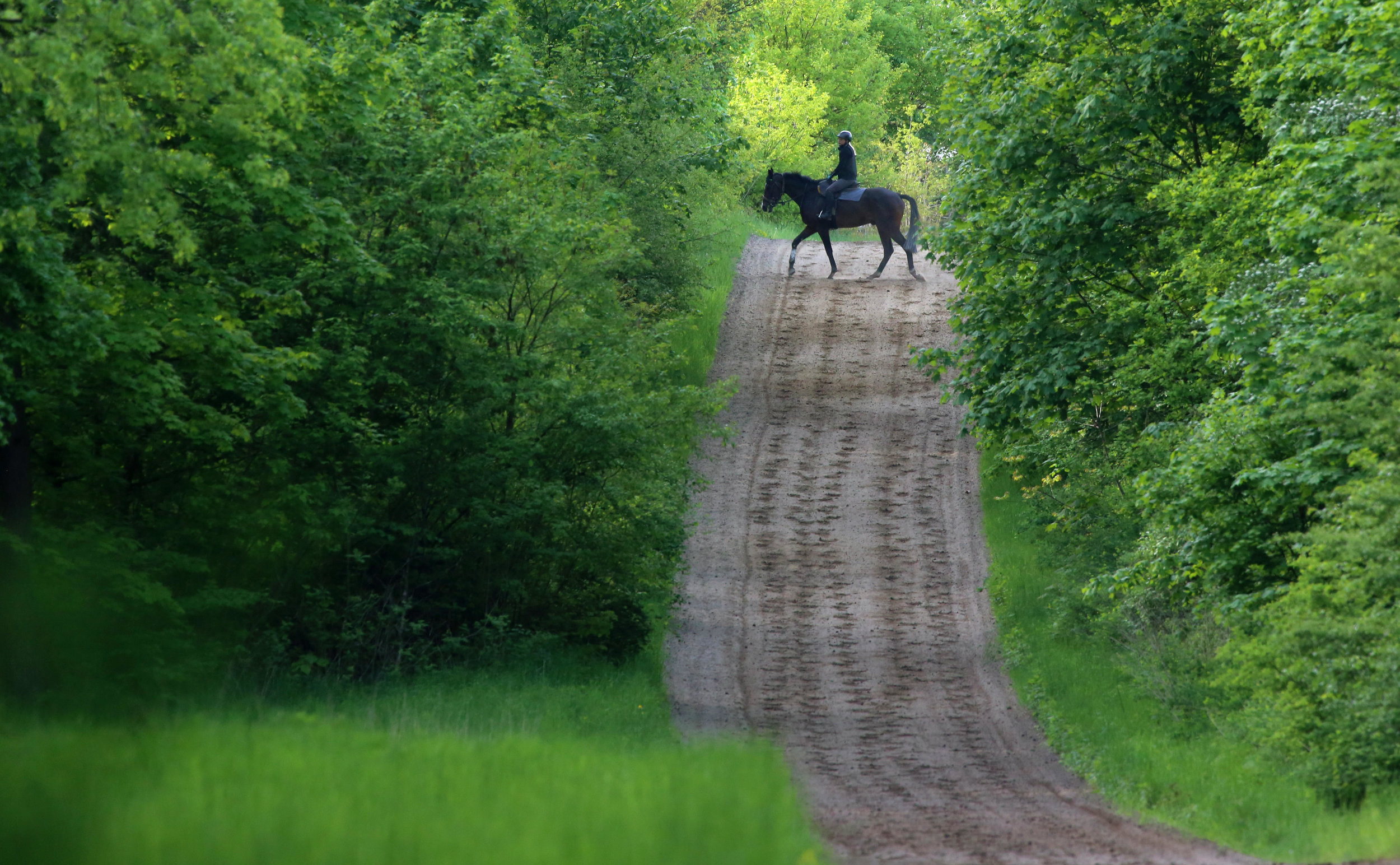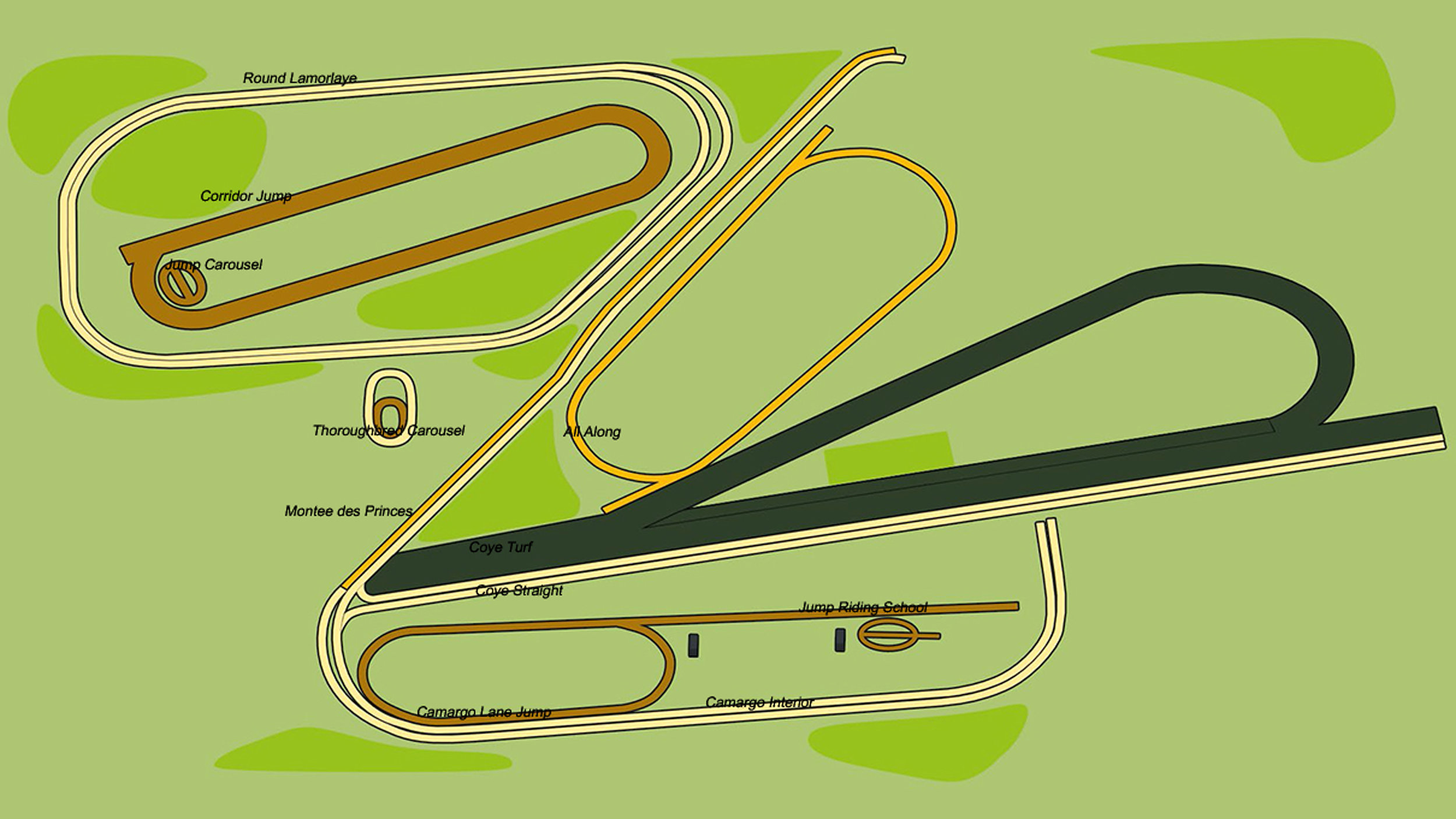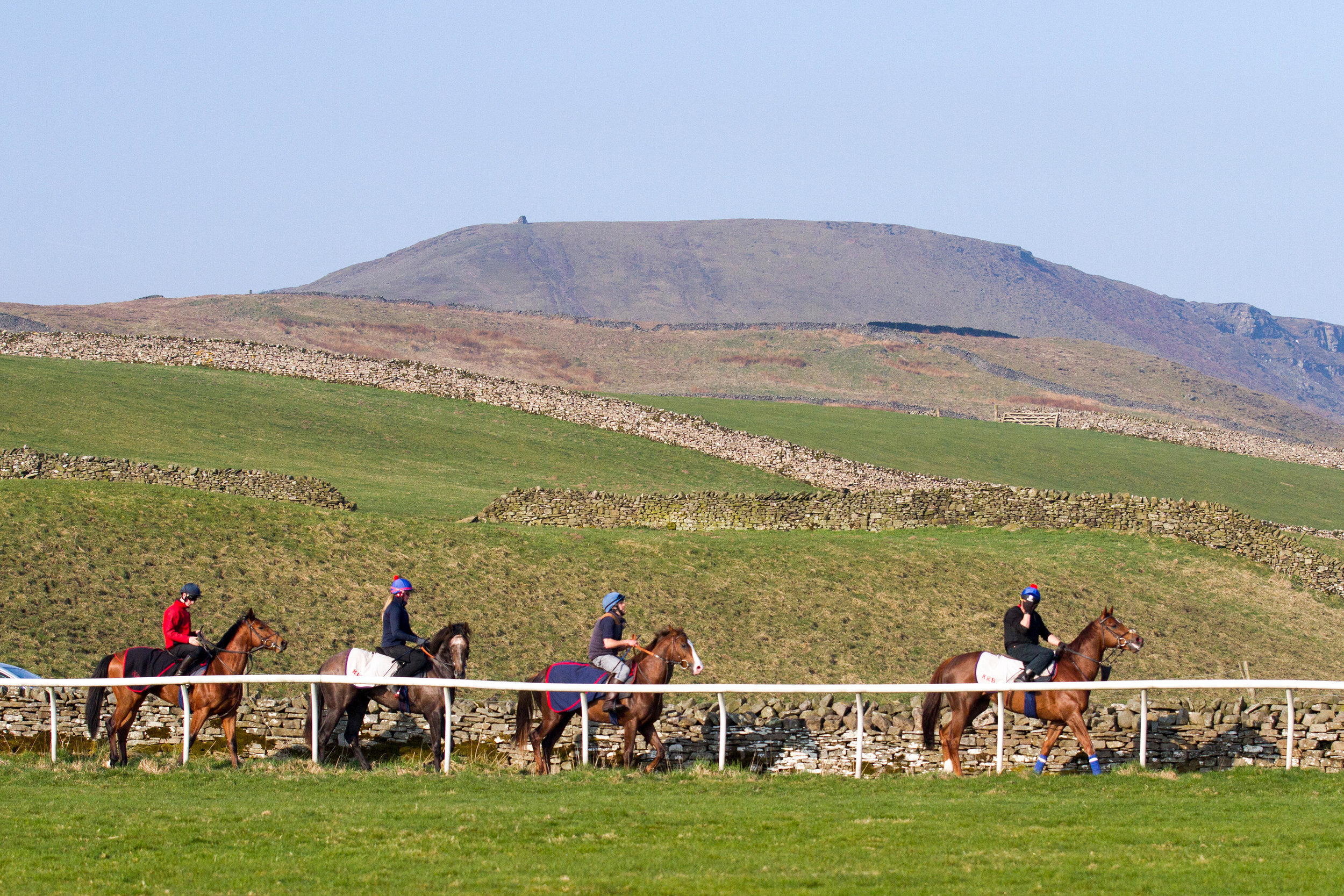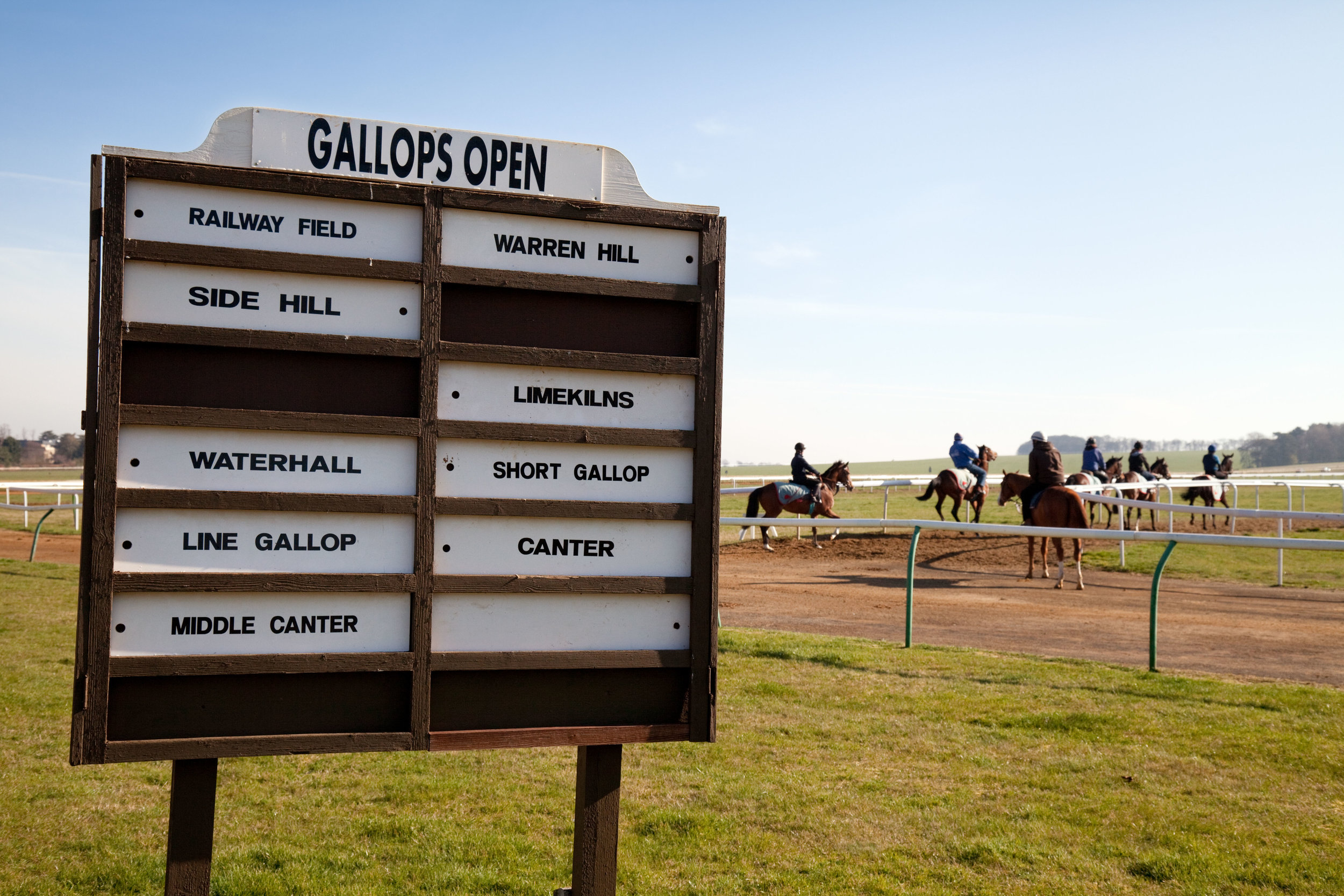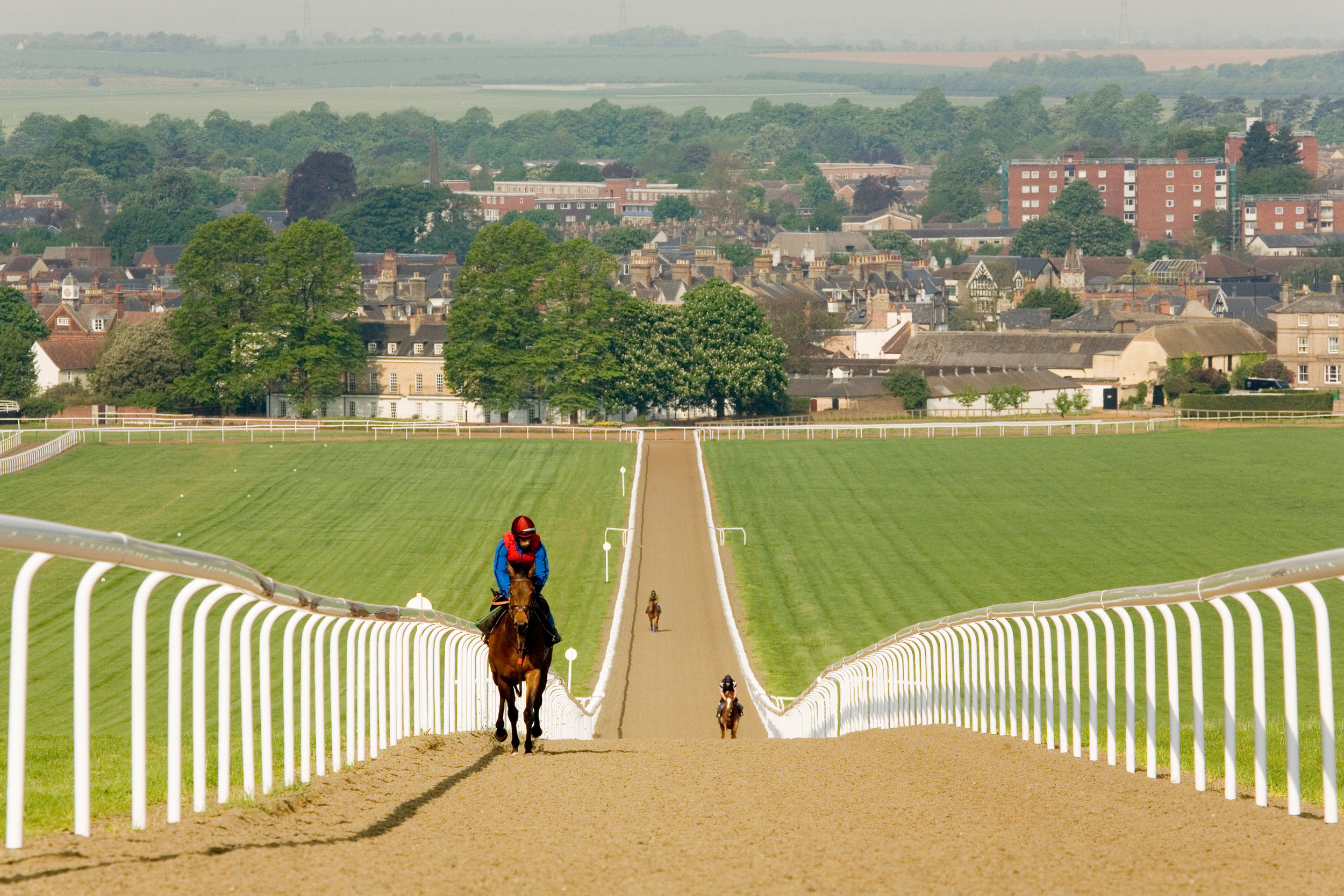Noel George and Amanda Zetterholm - The anglo-swedish duo taking French racing by storm
/Article by Katherine Ford
Training partnerships are now firmly established in racing. Father and son (or daughter), husband and wife, or experienced trainer and long-standing assistant; these entities are now regularly seen in Europe and beyond. The association of George & Zetterholm Racing, one of the newest names in the French jumps trainers’ column, doesn’t fit in any of the usual categories but has already proven its efficiency in less than a year of operation.
Twenty-four-year-old Noel George, who found his way to France during Covid, is a former amateur rider and the son of Gr. 1 winning British trainer Tom George; whereas dynamic Swedish-born Amanda Zetterholm boasts a wealth of experience in a variety of capacities in racing and bloodstock around the world. The pair have no background together, and a chance remark has seen them launch as one of France’s most exciting training operations.
“We knew each other, but that was all; and it was (fellow Chantilly trainer) Tim Donworth who suggested we set up together,” explains Amanda. “Noel wanted to train in France, but of course it is complicated to set up here, so it was a good opportunity to do it in partnership. I told Noel I’d found this yard I love, so we went to visit it together, and he said he’d love to train here. I bought the yard exactly a year ago, in September 2022”.
Creating a masterpiece
Amanda and Noel each bring their own talents to the partnership, “I’m the Louvre, and he’s Thomas Gainsborough”! Amanda’s marketing background shines through with her metaphor illustrating that she provides the solid base for Noel to fulfil his role as “the artist” with the horses.
Growing up in Sweden, Amanda Zetterholm enjoyed riding and show jumping but didn’t have any involvement in racing until studies took her to Australia, where she spent time with David Hayes and Matthew Ellerton. “My first job in racing was with agent Damon Gabbedy, who taught me a lot about the breeding side. Then I went to South Africa and spent three years with Mike de Kock, which was a great experience—between Dubai, England and South Africa. He is very avant-garde”.
In 2013, Amanda was recruited by the Aga Khan Studs as commercial executive and has fulfilled a variety of roles for the famous operation. She currently balances the burgeoning training career with work for the Aga Khan Studs but is soon set to devote herself fully to George & Zetterholm Racing. “I’ve spent 10 wonderful years with the Aga Khan Studs, but I will finish at the end of the year; I can’t do both. They’re very proud of what I’ve achieved”.
Add to these achievements a successful amateur riding career on the flat, a stint as Goffs French representative and an instrumental part in the setting up of the stable of former partner David Cottin, with whom she has two young sons, Winston and Clovis, plus success in buying young jumping stock to sell on, which has set her up financially to be able to buy the Chantilly yard; it is clear that Amanda is not shy of a challenge or a busy schedule.
Well-defined roles
“We passed the trainers’ licence together, and the idea was always that Noel wanted to do his training regime. He’s on the track every morning with the horses. I’m out here maybe three times a week currently, but that will change once I finish with the Aga Khan Studs. We both discuss and do the entries. We’re on the same wavelength, and I would say I am a very easy partner. I have a lot of experience, and I don’t feel I have anything to prove.
“In France, there is so much paperwork. I deal with the business side, the staff and the logistics; and I do the communication with the owners, which I love. I don’t feel the stress that Noel feels with the owners as he is the one who has directly prepared the horse, so I can be more relaxed. I am there to reassure them and make sure that they have a good day out. We are very complementary. Noel is a very confident person. You need to be confident to be a good trainer because the horses feel the confidence, and the owners too. He passes that confidence on to everyone”.
Living the dream in France
Noel George displays a confidence which belies his years, and in France he has found an opportunity to fulfil a dream that he had not imagined possible. “Since I left school, I aimed to train flat horses because I didn’t see economically and business-wise how it could work training jumpers in the UK”. After a year with Graham Motion in the USA and summer holidays with Sir Mark Prescott and Joseph O’Brien, Noel George has learnt from some of the best on the flat.
The French connection came about by coincidence, although there is family history across in Chantilly as father Tom George spent time with the pioneering François Doumen in the days of The Fellow, whetting his appetite for cross-Channel raids. “I remember when Dad always used to come over with runners and then Halley won the Gp. 1 Maurice Gillois. I wasn’t there that day but I remember it—Dad built his new kitchen because of it! That stuck in my mind, that the French prize money is amazing… I was meant to be going to Australia as an assistant, but then Covid happened and French racing started before anywhere else; so I moved over to work for Fabrice Chappet”.
Noel didn’t speak French when he arrived but learnt quickly—thanks to language apps, Chappet’s former assistant, and now young trainer Xavier Blanchet, as well as being motivated to communicate when chasing a few French girls!
During the period with Classic-winning Chappet, Noel oversaw a string of horses running under a provisional licence for his father Tom. “I was giving orders to Dad’s horses on the same gallops, and it was a help that I knew the farrier, the feed suppliers etc”.
Provisional training operations in France are restricted to three months, but the experience served to reiterate the financial sense of racing in France but also the accompanying bureaucracy.
“I eventually passed the trainers exams, which aren’t easy! It’s not just knowing the language, it’s knowing all the anatomy of the horse, in French, the employment laws, how to write a payslip—all the different taxes… For that, having Amanda is a huge asset because I can focus on training the horses and she does all that complicated stuff”.
Noel is also full of praise for his father Tom. “He’s a great source of advice for me; I ring him whenever I have a question. We couldn’t do it without him. He’s put his neck on the chopping block by pushing a lot of the horses over here, and it seems to be paying off”.
Top-class training grounds
Another huge advantage for George & Zetterholm Racing is their stable and accompanying facilities. The yard, on the outskirts of the village of Avilly-St-Léonard, has already sent out three winners of France’s feature Grand Steeple-Chase de Paris as former owner Christophe Aubert was responsible for Line Marine (2003) and Mid Dancer (2011 & 2012).
This is part of France Galop’s huge Chantilly training domain, but being slightly out on a peaceful limb compared with the more famous locations of Chantilly, Gouvieux, Lamorlaye and Coye-la-Forêt, it has all the benefits of a private establishment. “We can’t praise France Galop enough for all they do for us,” says Amanda. “When the English owners come over, they just can’t believe it, and even Noel’s dad has his own amazing facilities; but he has to run it all himself. This area of Avilly has been almost dormant for several years and so the France Galop teams are very keen to revive it and make improvements”.
In concrete terms, this means that Noel and Amanda, having the only active stable in the vicinity, have exclusive use of extensive schooling facilities and gallops. “We’ve got cross-country, steeplechase fences and hurdles. They are a little bit smaller than the racecourse ones, but I don’t think you have to jump big in the mornings. It’s better if they’re a bit smaller as they give the horses confidence. We tell the France Galop staff the days when we will be schooling and they make sure everything is prepared”.
Noel adds, “The training centre is incredible, and we are so well looked after by France Galop who really want to help us. They give the horses the best chance possible. We have a 2000m sand gallop through the forest, which we use daily; then there’s a big 2000m sand circle which isn’t watered but in the winter it’s very good for the youngsters—it’s like a racecourse! We have to go to Chantilly to use the grass, but I think it does the horses good to go on the lorry”.
Schooling is an integral part of training jumpers in France; and Noel admits, “I’ve watched videos of how Macaire and Nicolle do all the French schooling and we’ve mixed it with the English way; and it seems to be working”.
The French policy of regular schooling has been adopted, and here again, the French system offers benefits. “The likes of James Reveley, Felix de Giles, Nicolas Gauffenic, and Kevin Nabet will be in nearly every Wednesday. It’s not like in England where the jockeys might be riding up north or down south and are less available for schooling. The horses, especially the older ones over from England, love it. It gives them a change, especially with the different steeplechase obstacles like the bullfinch the bank, the white wall… And as we don’t have the hills they have in England, it is good for fitness”.
“The horses jump more in races here. In a two-mile hurdle in England, they jump eight small hurdles; whereas round Auteuil over two miles, they jump 12 mini-English fences. If you lose two lengths at a hurdle here, it makes such a big difference as the next hurdle comes much quicker than in England. Jumping is very important”.
Making financial sense
Jumping is important, but prize money is even moreso; and in less than a year of operation, the stable has already earnt plenty. “We’ve had 100 runners for 800,000€ in prize money, so that’s 8000€ per runner which is a great statistic. French racing is very lucrative,” says Amanda, while Noel emphasises the point further: “The very fact that a horse can be in training and not cost money is a huge benefit. The number of horses that pay for their training fees in England is very few; whereas if your horse isn’t paying your training fees here, you probably need to think about moving it on. It’s an incredible way to be and a massive advert for French racing. It just takes the pressure off everything”.
Capacity is maybe the only source of pressure currently for George & Zetterholm Racing. The yard has 25 boxes and 14 turn-out paddocks, with a further 15 boxes rented nearby and a barn with 16 more stables under construction at the yard. “We are limited in space, and we want to focus on quality rather than quantity,” says Amanda; although Noel’s ambitions have no limits.
“The dream eventually would be to compete with the top trainers in the championship, but we want to race on both sides of the channel. I’m English. I’ve grown up in England, and we’ve got English owners; so our dream is to win big races in England too. I can’t see why we can’t do that training here. We have amazing grass gallops; we can do racecourse gallops at tracks like Compiègne, so we can get them as ready as anyone in England. Cheltenham is quicker to access for us on the lorry than it is for Gordon Elliot and Willie Mullins; and Kempton is closer to us than Pau”!
Again, the support from Tom George will be key, as horses will spend a few days at his Down Farm in Slad near Cheltenham to acclimatise and school over British obstacles.
“I can understand why Britain is not a priority for many French trainers, as there is so much money to be won here; but we have owners that are buying horses to win on big days and they want to win at the big meetings. When we do get on the boat, hopefully we will bring a few winners back for France, with English owners and English and Swedish trainers”!





